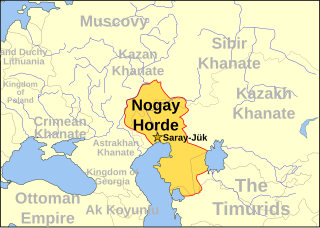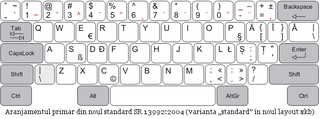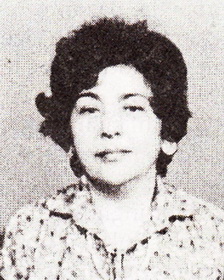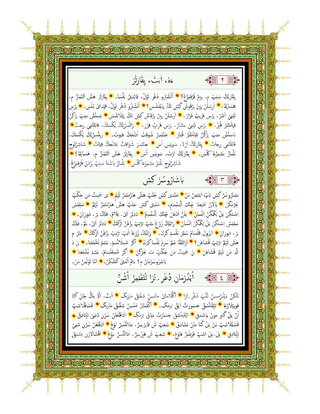
The Tatars, formerly also spelt Tartars, is an umbrella term for different Turkic ethnic groups bearing the name "Tatar" across Eastern Europe and Asia. Initially, the ethnonym Tatar possibly referred to the Tatar confederation. That confederation was eventually incorporated into the Mongol Empire when Genghis Khan unified the various steppe tribes. Historically, the term Tatars was applied to anyone originating from the vast Northern and Central Asian landmass then known as Tartary, a term which was also conflated with the Mongol Empire itself. More recently, however, the term has come to refer more narrowly to related ethnic groups who refer to themselves as Tatars or who speak languages that are commonly referred to as Tatar.

Tatar is a Turkic language spoken by the Volga Tatars mainly located in modern Tatarstan, as well as Siberia. It should not be confused with Crimean Tatar or Siberian Tatar, which are closely related but belong to different subgroups of the Kipchak languages.

Crimean Tatar, also called Crimean, is a moribund Kipchak Turkic language spoken in Crimea and the Crimean Tatar diasporas of Uzbekistan, Turkey, Romania, and Bulgaria, as well as small communities in the United States and Canada. It should not be confused with Tatar, spoken in Tatarstan and adjacent regions in Russia; the two languages are related, but belong to different subgroups of the Kipchak languages, while maintaining a significant degree of mutual intelligibility. Crimean Tatar has been extensively influenced by nearby Oghuz dialects and is also mutually intelligible with them to varying degrees.

Nogai also known as Noğay, Noghay, Nogay, or Nogai Tatar, is a Turkic language spoken in Southeastern European Russia, Kazakhstan, Uzbekistan, Ukraine, Bulgaria, Romania and Turkey. It is the ancestral language of the Nogais. As a member of the Kipchak branch, it is closely related to Kazakh, Karakalpak and Crimean Tatar. In 2014 the first Nogai novel was published, written in the Latin alphabet.

The Nogai Horde was a confederation founded by the Nogais that occupied the Pontic–Caspian steppe from about 1500 until they were pushed west by the Kalmyks and south by the Russians in the 17th century. The Mongol tribe called the Manghuds constituted a core of the Nogai Horde.

Beyond the official Romanian language, multiple other languages are spoken in Romania. Laws regarding the rights of minority languages are in place, and some of them have co-official status at a local level. Although having no native speakers, French language is also a historically important language in Romania, and the country is a member of the Organisation internationale de la Francophonie.

Tatars in Bulgaria are Crimean Tatar, but also Nogai Tatar minorities in Bulgaria.

Tatars of Romania, Tatars of Dobruja or Dobrujan Tatars are a Turkic ethnic group that have been present in Romania since the 13th century. According to the 2011 census, 20,282 people declared themselves as Tatar, most of them being Crimean Tatars and living in Constanța County. But according to the Democratic Union of Tatar Turkic Muslims of Romania there are 50,000 Tatars in Romania. They are one of the main components of the Muslim community in Romania.

Islam in Romania is followed by only 0.4 percent of the population, but has 700 years of tradition in Northern Dobruja, a region on the Black Sea coast which was part of the Ottoman Empire for almost five centuries. In present-day Romania, most adherents to Islam belong to the Tatar and Turkish ethnic communities and follow the Sunni doctrine. The Islamic religion is one of the 18 rites awarded state recognition.

The Turks of Romania are ethnic Turks who form an ethnic minority in Romania. According to the 2011 census, there were 27,698 Turks living in the country, forming a minority of some 0.15% of the population. Of these, 81.1% were recorded in the Dobruja region of the country's southeast, near the Black Sea, in the counties of Constanța (21,014) and Tulcea (1,891), with a further 8.5% residing in the national capital Bucharest (2,388).

The Nogais are a Kipchak people who speak a Turkic language and live in the North Caucasus region. Most are found in Northern Dagestan and Stavropol Krai, as well as in Karachay-Cherkessia and Astrakhan Oblast; some also live in Chechnya, Dobruja, Turkey, Kazakhstan, Uzbekistan, Ukraine and a small Nogai diaspora is found in Jordan. They speak the Nogai language and are descendants of various Mongolic and Turkic tribes who formed the Nogai Horde. There are eight main groups of Nogais: the Ak Nogai, the Karagash, the Kuban-Nogai, the Kundraw-Nogai, the Qara-Nogai, the Utars, Bug-Nogai and the Yurt-Nogai.
Emel Emin is a Romanian Crimean Tatar poet, translator, Turkologist, and educator. She writes her work in Turkish. Although most of her poetry is free verse, she sometimes uses syllabic verse and she admires Arabic prosody. With love for traditional forms of poetry she also published ghazal and rubayat. She is associated with the Writers' Union of Romania and Turkish Language Association in Turkey.

Kadriye Nurmambet was a Romanian Crimean Tatar traditional folk singer and folklorist who attracted national attention and was known as The Nightingale of Dobruja.
Ismail H.A. Ziyaeddin was a Crimean Tatar poet known for adapting the Latin alphabet to the special needs of the Crimean Tatar language and co-authoring the first Tatar language textbooks with Latin script in Romania.

The Democratic Union of Turkic-Muslim Tatars of Romania is an ethnic minority political party in Romania representing the Tatar community.

The Oghuz languages are a sub-branch of the Turkic language family, spoken by approximately 108 million people. The three languages with the largest number of speakers are Turkish, Azerbaijani and Turkmen, which, combined, account for more than 95% of speakers of this sub-branch.
The Crimean Tatar language consists of three dialects. The standard language is written in the middle dialect, which is part of the Kipchak-Cuman branch. There is also the southern dialect, also known as the coastal dialect, which is in the Oghuz branch, and the northern dialect, also known as nogai dialect, which is in the Kipchak-Nogai branch.
Taner Murat is a Romanian Tatar writer, poet and translator.

The Dobrujan Tatar alphabet is the writing system of Dobrujan Tatar. Before 1956 only Perso-Arabic script was used and after 1956, Latin alphabet was also adopted.













